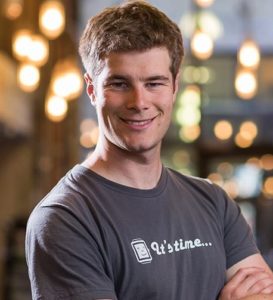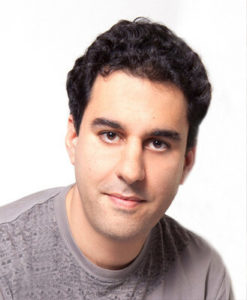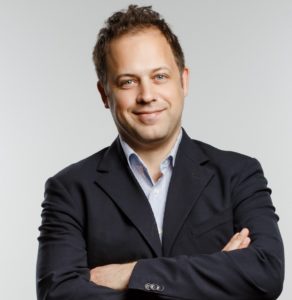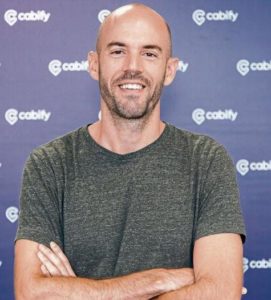The Smart Taxi : India’s Premium Cab Service; ‘Travel in Style’
There are so many companies and brands out there that businesses are forced to gain a client’s approval to provide them with their services. Since they have a wide variety of options, customers have the freedom to choose a company that best suit their needs and requirements. Gone are the days of absolute brand loyalty wherein a whole household would use one product, and one product alone. The future is about giving the clients what they need and also being courteous and polite while doing so, to improve customer experience. Delivering unique and pleasant customer experiences will help in retaining clients, and none understand this better than the new-age start-up The Smart Taxi. Here’s a look at how an ordinary middle-class man dared to dream and made his dream into a reality.
About the Founder
Dhruvam Thaker was born in Jamnagar, and shortly after his birth, his family shifted to Ahmedabad. While growing up, Dhruvam was a quiet, and an introvert boy who had a knack for mechanics and solving riddles. Being shy and apprehensive, he preferred the company of his cars and toys over other people. It was cricket that finally helped the shy Dhruvam make friends and get over his fear of interacting with people. His father is a retired government bank employee, while his mother is a housewife. He has two siblings, a brother and a sister, who have hearing and speaking disabilities.
Due to financial constraints on the home front, Dhruvam studied in a Gujarathi medium school till class 9. His interest in science led him to take up science in his 11th, and he aspired to become an engineer. The first setback he faced in life was failing his 12th-grade exams. He, therefore, used his 10th-grade results to join a diploma course in Nirma University, determined to get his life back on track.

As his love for automobiles and machines grew, so did his grades, to an extent where he came in second in his University exams. While in college, Dhruvam worked part-time jobs and did several odd jobs to make ends meet and to ease the financial strain on his family. Soon after, he got placed and joined an MNC in Bengaluru in 2008 and worked in process improvements and production engineering. In 2013, he came back to Ahemdabad and joined a job near his home. Apart from his job, Dhruvam started feeling the need to do something of his own. While this thought was always in the back of his mind, pressure from society and financial constraints prevented him from taking the leap of faith. But one day, he made his mind and quit his job without letting anyone know about it.
Founding The Smart Taxi
While working in Bengaluru, it required him to travel using taxis, and he often found taxi services to be lacking, when it came to customer experience. He realised that issues such as poor car maintenance, rude staff behaviour and late pickups plagued the taxi service industry, while he found the airline and hotel industry to be the opposite.
That is when he came up with the idea for a taxi service that provided the same hospitality extended by airlines and hotels all over the country. The idea stayed with him all the while as he moved to Ahmedabad and started his new job there. Finally, after four years of running the idea through his head, he decided to quit his job and make his idea a reality. Dhruvam chose Ahmedabad to be his company’s headquarters as he had a local advantage and knew the market there well. So, in September 2016, Dhruvam finally gave life to his long-standing idea of a luxury taxi service, and The Smart Taxi was born. He, and his brother, who is a graphic designer, quickly got to work, and created over 22 test logos, before finally choosing on their present logo.
Speeding Forward
The Smart Taxi now has a fleet of well-maintained cabs, which have all the state of the art features and installations. The taxis themselves are driven by courteous, experienced, polite and well-trained professionals. There is an elite group of people in India who don’t mind paying extra for premium service, and that is exactly what The Smart Taxi provides; exemplary service and outstanding customer experience. The Smart Taxi has several plans and offers, and rents cabs for both hourly trips and longer outstation journeys. Their cabs welcome clients with crafty speeches, play soothing music in the taxi to create a positive ambience, and even offer customers everything from water bottles to chocolates and snacks! Some of their taxis even have WiFi, cold drinks, a plethora of magazines and an Amazon Kindle to help the customer relax and enjoy their favourite book or novel.
The Smart Taxi began its journey with just one cab that Dhruvam used to drive. Since then, the company has grown and now owns a fleet of over 60 cars, including comfortable Sedans and powerful MUVs. The company has now expanded and functions in seven cities; namely, Ahmedabad, Vadodara, Rajkot, Jaipur, Pune, Indore, and Bhopal, with plans to expand even further. As the company is a bootstrapped startup, they make use of online platforms, like Google and Whatsapp to run their operations. The company also has a centralized booking centre from where they delegate bookings to local taxi companies or fleet owners. At present, the booking happens only online, but Dhruvam has plans to extend this functionality to other platforms in the near future.
Dhruvam remembers how during the initial days, he ran the entire company, doing everything from driving cabs to attending calls. But throughout his struggle, he never gave up, but rather kept pushing forward hoping that things will work out eventually. And work out it did, as within two years, the company has grown in every way with two out of every three customers coming back to them and 3 out of 4 even providing them with referrals. While a long road lies ahead for Dhruvam, it is safe to say that this shy, introverted mechanical engineer will surely leave his mark in the field of taxi service!

Being a cinephile with a love for all things outdoorsy, Athulya never misses a chance to chase inspiring stories or poke fun at things, even when the subject is herself. Currently pursuing a degree in mechanical engineering, she is someone innately interested in technical and scientific research. Music reviews and op-eds define her as they allow her to explore different perspectives. Though sometimes she thinks she makes more sense playing the guitar than she does while writing.











